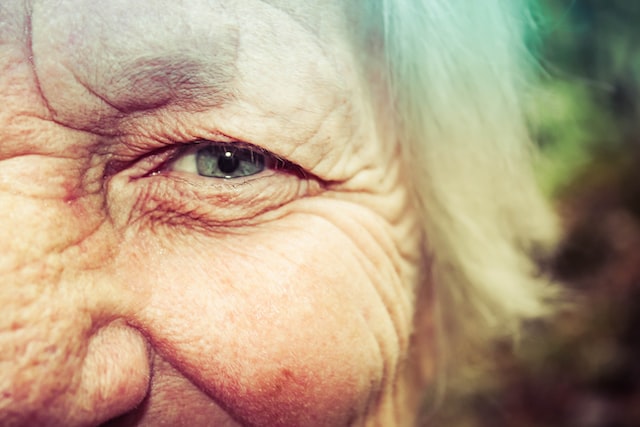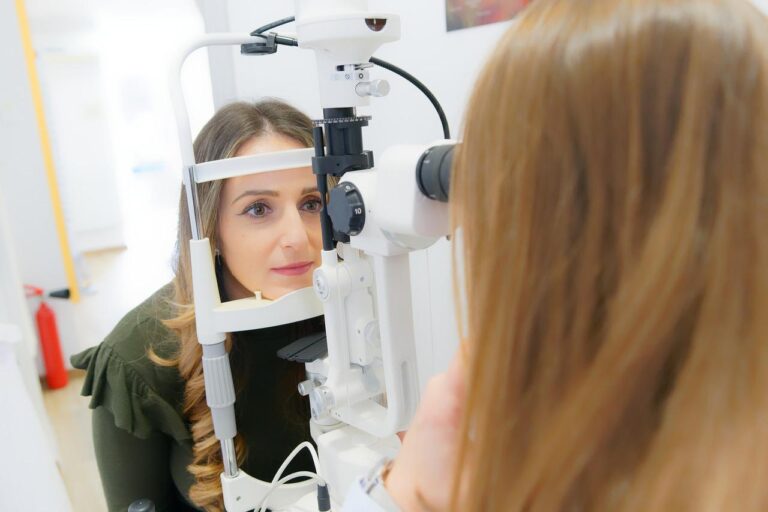Page Contents
Age-related macular degeneration (AMD) is a progressive eye condition that affects the macula, the central part of the retina responsible for sharp, detailed vision. As a leading cause of vision impairment among older adults, AMD gradually reduces the ability to see fine details, impacting daily activities such as reading, driving, and recognising faces. While AMD does not cause complete blindness, it significantly affects the quality of life, particularly in individuals over 50 years old.
Global trends and AMD in Singapore
Globally, AMD is a major public health concern, especially in ageing populations. According to the World Health Organization (WHO), AMD accounts for approximately 8.7% of all blindness cases worldwide. The prevalence of AMD is rising, with an estimated 288 million people expected to be affected by 2040.
In Singapore, where the ageing population is growing, AMD is becoming increasingly common. Studies indicate that one in four adults aged 60 and above has early AMD, with a higher risk among individuals of Chinese descent. Given Singapore’s rapidly ageing society, the burden of AMD on healthcare systems is expected to increase significantly in the coming years.
Signs and symptoms of AMD
AMD typically progresses in two forms: dry AMD (atrophic) and wet AMD (neovascular). In the early stages, individuals may not notice symptoms, but as the disease advances, common signs include:
Blurry or distorted central vision (straight lines may appear wavy)
Dark or empty spots in the center of vision
Difficulty reading or recognising faces
Increased sensitivity to glare
Slow recovery of vision after bright light exposure

Risk factors and the role of age
Age is the most significant risk factor for AMD, with prevalence increasing sharply after 50 years old. However, several other factors may contribute to the disease, including:
Genetics
A family history of AMD increases the likelihood of developing the condition.Smoking
Smokers are up to four times more likely to develop AMD than non-smokers.Hypertension and cardiovascular diseases
Poor blood circulation can damage retinal cells.Obesity and poor diet
Diets lacking in antioxidants, omega-3 fatty acids, and leafy greens can increase the risk.Excessive sun exposure
UV rays may accelerate retinal damage over time.
While genetics and lifestyle factors play a role, ageing remains the most influential factor, as natural wear and tear on retinal cells make them more susceptible to damage and deterioration.
Potential complications and impact on daily life
If left unmanaged, AMD can lead to significant visual impairment, making daily tasks challenging. Individuals may struggle with reading, cooking, using electronic devices, or even recognising faces, leading to frustration and loss of independence. Tasks that require fine vision, such as sewing or reading small print, may become impossible without assistive devices.
The progressive nature of AMD can also lead to falls and injuries, as individuals may have difficulty detecting obstacles in their surroundings. Driving becomes hazardous due to decreased ability to see road signs, pedestrians, and other vehicles, ultimately leading to loss of driving privileges.

Emotionally, AMD can have a profound impact, contributing to depression and social isolation. Many individuals with AMD withdraw from social activities due to difficulty recognising faces and reading facial expressions. Feelings of helplessness and dependence on caregivers can further affect mental well-being, reducing overall quality of life.
Common treatments for AMD
While there is no complete cure for AMD, various treatment options can slow down its progression and preserve vision:
Anti-VEGF injections
These medications help to slow the growth of abnormal blood vessels in wet AMD.Laser therapy
In some cases, laser treatment can seal leaking blood vessels to prevent further damage.Nutritional supplements
The AREDS (Age-Related Eye Disease Study) formula, which includes vitamins C, E, zinc, copper, lutein, and zeaxanthin, can help to slow AMD progression.Low vision aids
Magnifying devices, special glasses, and assistive technology can improve daily functioning for those with AMD.
How you can prevent AMD?
Although some risk factors such as age and genetics are beyond control, certain lifestyle modifications can reduce the risk and slow disease progression:
Adopt a nutrient-rich diet
Eat plenty of green leafy vegetables, fish high in omega-3 fatty acids, and nuts.Quit smoking
Stopping smoking can dramatically lower AMD risk.Exercise regularly
Maintaining a healthy weight and good cardiovascular health supports retinal health.Protect your eyes from UV exposure
Wear sunglasses with UV protection when outdoors.Monitor blood pressure and cholesterol
Managing cardiovascular health benefits eye health.

Conclusion
AMD is a progressive condition that can significantly impact quality of life, but early detection and prevention are key to preserving vision. Regular eye screenings, especially for individuals over 50 years old, can help detect AMD early and improve treatment outcomes. By adopting a healthy lifestyle, protecting your eyes, and seeking timely medical advice, you can take proactive steps to maintain good vision and independence as you age.

If you or a loved one experience any symptoms of AMD, schedule an eye examination with an ophthalmologist as soon as possible. Early intervention makes all the difference in managing and preventing vision loss.
